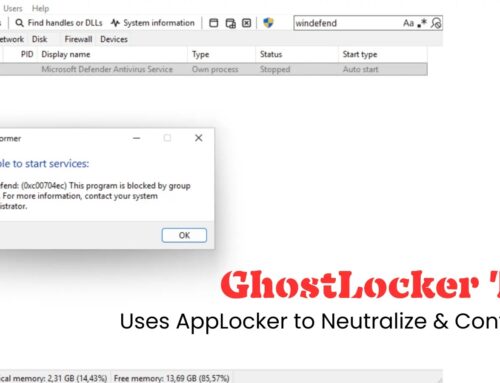
US Nuclear Weapons Agency Breached by Hackers Using SharePoint 0-Day Vulnerability
US Nuclear Weapons Agency Breached: Exploiting SharePoint 0-Day, A Critical Analysis
The National Nuclear Security Administration (NNSA), a cornerstone of US defense infrastructure, has reportedly fallen victim to a sophisticated cyberattack. This incident, leveraging a previously unknown vulnerability in Microsoft SharePoint, underscores the persistent and evolving threat landscape faced by critical national assets. The breach, attributed to Chinese government-affiliated hacking groups, highlights the increasing audacity and technical prowess of state-sponsored actors targeting sensitive government networks.
The SharePoint Zero-Day Vulnerability Explained
At the heart of this breach lies a “zero-day” vulnerability in Microsoft SharePoint. A zero-day exploit refers to a freshly discovered software flaw for which no patch or remediation has yet been released by the vendor. This makes such vulnerabilities particularly dangerous as defenders have no pre-existing defenses. In this specific case, the attackers exploited a flaw affecting on-premises SharePoint installations, granting them unauthorized access to networks.
While the specific CVE ID for this SharePoint zero-day involved in the NNSA breach has not been publicly disclosed, it’s crucial for organizations to remain vigilant for new vulnerability announcements. Zero-day exploits are potent weapons in the arsenal of advanced persistent threat (APT) groups, allowing them to bypass conventional security measures until a patch becomes available.
The Scope of the Attack: Beyond the NNSA
The NNSA was not an isolated target. Reports indicate that the same Chinese government-affiliated hacking groups leveraged this SharePoint 0-day to infiltrate over 50 organizations. This broader scope emphasizes the systematic nature of these attacks and the intelligence-gathering objectives behind them. Organizations leveraging on-premises SharePoint installations, particularly those in critical infrastructure, government, and defense sectors, are at heightened risk.
The successful exploitation of a zero-day in a widely used enterprise application like SharePoint demonstrates a significant investment in vulnerability research and exploit development by state-sponsored actors. This level of sophistication necessitates a robust and proactive cybersecurity posture for any organization.
Understanding the Threat Actor: State-Sponsored Hacking Groups
Attributing cyberattacks is a complex process, but the consistent referencing of “Chinese government-affiliated hacking groups” points to a pattern of state-sponsored activity. These groups are often well-resourced, highly skilled, and operate with strategic objectives, including espionage, intellectual property theft, and disruption of critical infrastructure. Their methodologies typically involve:
- Extensive Reconnaissance: Thoroughly mapping target networks and identifying vulnerabilities.
- Zero-Day Exploitation: Developing or acquiring previously unknown vulnerabilities for initial access.
- Persistence Mechanisms: Establishing backdoors and remote access to maintain a foothold within compromised networks.
- Lateral Movement: Spreading within the network to discover and exfiltrate high-value data.
- Evasion Techniques: Employing sophisticated methods to bypass detection by security solutions.
Remediation Actions and Mitigations
Given the severity of a SharePoint zero-day exploit, immediate and decisive action is paramount. While precise remediation steps for the exploited zero-day will depend on Microsoft’s official guidance, the following general actions are critical for organizations running on-premises SharePoint:
- Apply Patches Immediately: As soon as Microsoft releases a patch for this or any related SharePoint vulnerability, apply it across all affected systems without delay. Monitor Microsoft’s security advisories and the National Vulnerability Database (NVD) closely.
- Isolate and Segment SharePoint Environments: Implement strict network segmentation to limit the blast radius if a SharePoint server is compromised. Isolate SharePoint servers from critical internal networks and sensitive data repositories.
- Implement Strong Access Controls: Enforce the principle of least privilege for all SharePoint users and administrators. Regularly review access rights and revoke unnecessary permissions. Employ multi-factor authentication (MFA) for all administrative accounts and, ideally, for all users.
- Monitor Logs for Anomalies: Continuously monitor SharePoint access logs, Windows event logs, and network traffic for unusual activity. Look for unauthorized access attempts, unusual file modifications, large data transfers, or connections from unusual IP addresses. Integrate logs with a Security Information and Event Management (SIEM) system.
- Regularly Back Up Data: Maintain regular, secure, and offline backups of all critical SharePoint data. Test backup restoration procedures to ensure data integrity and recoverability.
- Endpoint Detection and Response (EDR): Deploy EDR solutions on all servers, including SharePoint, to detect and respond to suspicious activities and potential compromises in real-time.
- Web Application Firewall (WAF): Utilize a WAF in front of SharePoint servers to protect against common web-based attacks and potentially some zero-day exploits. Configure the WAF to block known malicious traffic patterns.
- Conduct Vulnerability Assessments and Penetration Testing: Regularly assess your SharePoint environment for vulnerabilities and conduct penetration tests to identify potential attack vectors before adversaries do.
Relevant Tools for Detection and Mitigation
| Tool Name | Purpose | Link |
|---|---|---|
| Microsoft Defender for Endpoint | Endpoint detection and response for servers and workstations. | https://www.microsoft.com/en-us/security/business/threat-protection/microsoft-defender-for-endpoint |
| Splunk / Elastic Stack | SIEM for log aggregation, analysis, and threat detection. | https://www.splunk.com / https://www.elastic.co |
| Nessus / Qualys | Vulnerability scanning and management. | https://www.tenable.com/products/nessus / https://www.qualys.com |
| OWASP ZAP / Burp Suite | Web application security testing and penetration testing. | https://www.zaproxy.org / https://portswigger.net/burp |
The Broader Implications for National Security
The breach of the NNSA and other critical organizations by a SharePoint zero-day is a stark reminder of the continuous cyber warfare being waged globally. Attacks on critical infrastructure not only compromise sensitive information but also have the potential to undermine national security and public trust. This incident underscores the urgent need for:
- Enhanced Collaboration: Closer collaboration between government agencies, private sector entities, and cybersecurity researchers to rapidly identify and remediate vulnerabilities.
- Proactive Threat Intelligence: Investing in and sharing actionable threat intelligence to predict and counter emerging threats.
- Cyber Resilience: Building comprehensive cyber resilience strategies that go beyond prevention to include robust detection, response, and recovery capabilities.
- Supply Chain Security: Scrutinizing the security posture of software vendors and ensuring the integrity of the entire supply chain.
Conclusion
The breach of the NNSA using a SharePoint zero-day vulnerability is a significant event highlighting the acute cyber risks facing critical national assets. It reinforces that no system is truly impenetrable, especially when state-sponsored actors are involved. Organizations, particularly those holding sensitive data, must embrace a proactive, multi-layered security approach, prioritize rapid patching for vulnerabilities like CVE-2023-21715 (a recent SharePoint RCE not directly tied to THIS breach but similar in impact) or any zero-day that may subsequently be identified, and invest in advanced detection and response capabilities to defend against increasingly sophisticated cyber threats.





